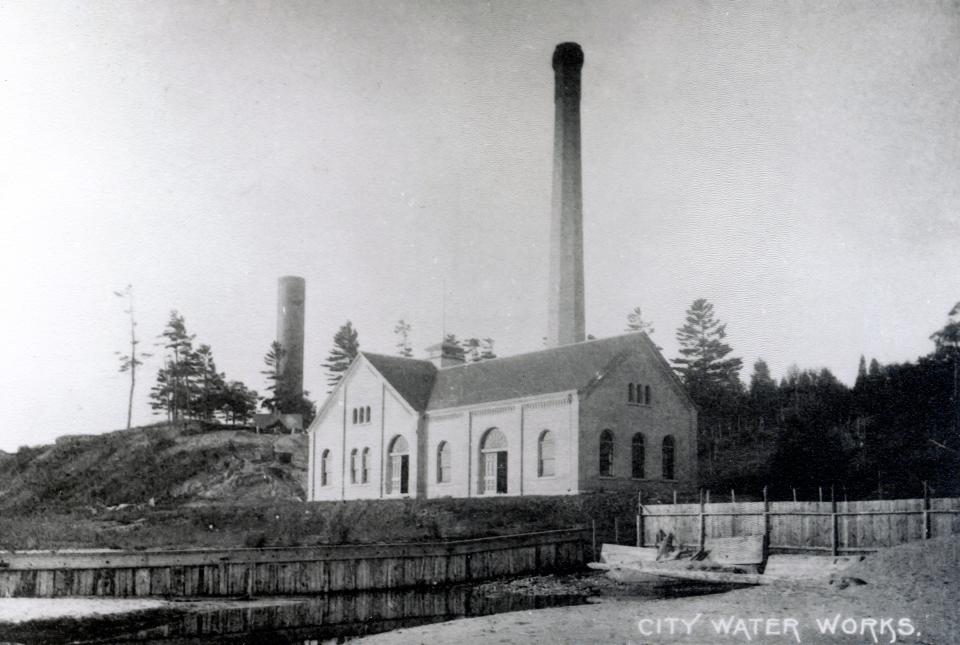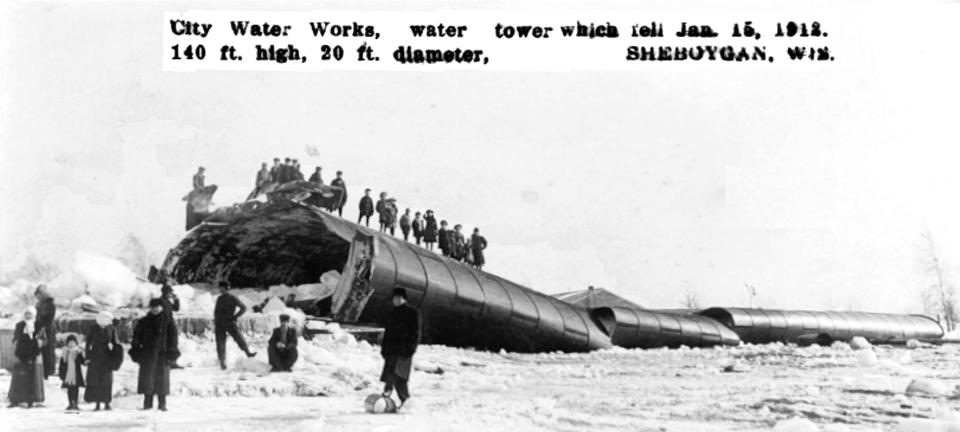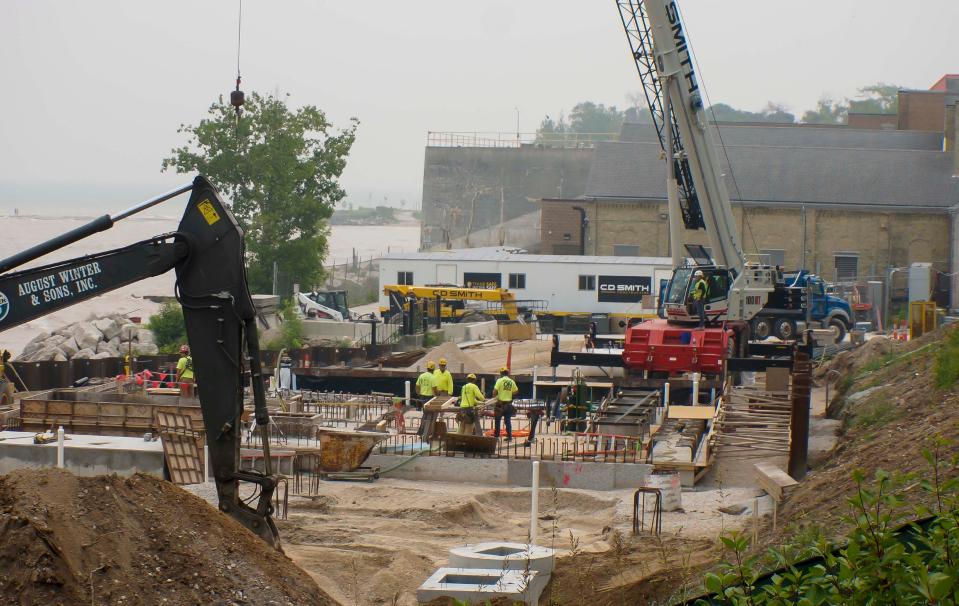Sheboygan water history includes company in default, toppled tower and first to fluoridate
SHEBOYGAN - Most of us take for granted the water that comes out of our taps will be clear and safe to drink.
But that wasn't always the case.
By 1880, the population of the city was at 7,314 and grew at a clip that by 1890 the population was 16,359, according to a Sheboygan Press article from Aug. 10, 1953.
Because of that population boom, safe and clean water needs were growing in the city.
The city council granted a franchise to the American Waterworks and Guarantee Company of McKeesport, Pennsylvania, to construct and operate a waterworks. The firm built and operated water plants around the United States.
The franchise agreement provided the company lay at least 15 miles of water mains and install 239 fire hydrants as designated by the city council.
The construction of a plant started in 1887 and was completed in 1888. The pumping station and water tower were at North Point at the foot of Park Avenue.
The water system became a unit in a chain of water plants owned by the Pennsylvania Corporation in Wisconsin and other states.

W.D. Cockburn of Pittsburgh was the first superintendent assigned to the Sheboygan plant by the McKeesport office in 1887. The rest of the staff were local individuals.
Once the plant was completed, the two first water customers in 1887, in order, were O.H. Whiffen, 1031 N. Seventh St., and Garton Toy Company, 101-113 N. Eighth St.
Superintendent Cockburn was succeeded in 1903 by Roy J. Miller of Clinton, Iowa.
The plant's operations had a bump in the road when on Friday Jan. 3, 1908, a Sheboygan Daily Press headline blared, "Water Co. Defaults, They cannot Deliver the goods to the city."
Frank M. Mc Elroy was the superintendent in 1908-1909, according to a clipping provided by Katie Dippel of the Sheboygan County Historical Research Center.
The city took possession of the water plant on March 2, 1909, and Roy J. Miller made Sheboygan his home.
Mc Elroy left the city and transferred to another company water plant.
The city paid $431,695 for the defaulted water plant by using a 20-year serial bond.
In the years following the acquisition, water rates went down in the city several times before a revision in the rates in 1931.
Chlorinator equipment was installed in 1922 at the pumping station by order of the State Board of Health because of occasional unsafe water conditions as a result of prevailing southeast winds, which drove sewage toward the North Point intake pipe.
By 1931, improved filtration systems reduced unusual odors and appearance. That new filtration system, at $430,000, cost more than the entire plant cost the city back in 1909.
The water plant didn't have it easy in those early years. In 1912, the water tower at North Point fell over. It split from the pressure of ice within it and toppled to the ground, releasing water and destroying the steel of which the tower was made. That tower had served Sheboygan some 25 years. It was 140 feet high with a 20-foot diameter. Its capacity was 330,000 gallons.

The city increased capacity when, in 1935, it erected a $200,000 facility with a 4 million-gallon capacity on Taylor Hill. It was claimed to be the largest such structure in the country at the time.
In 1946, Sheboygan was the first city in Wisconsin and the third city in the United States to begin fluoridation. At the time it had the endorsements of the State Board of Health, local, state and county dental and medical societies in approval.
Sheboygan Falls became part of the system in 1950 with the installation of a 16-inch water transmission main by Sheboygan Falls. The connection was made from a 30-inch main near the Taylor Hill reservoir. The water supplied was 7% of the total output in 1952. The village of Kohler was also added to the system.
Today, according to a Sheboygan Press article, construction will start in summer 2023 on a Sheboygan Water Utility project several years in the works: replacing one of the two intake pipelines that draw the city’s water from Lake Michigan.

The approximately $41 million project involves construction of a 6,500-foot water intake pipeline from Lake Michigan, a shore well to receive the lake water, and a new pump station at 72 Park Ave., on the eastern edge of Vollrath Park.
To see the image larger, click here.
RELATED - Elkhart Lake became a road racing destination | Throwback
RELATED - Sheboygan’s Vollrath Bowl | Throwback
RELATED - Oley Groh was Sheboygan’s first Life Saving Station captain | Throwback
This article originally appeared on Sheboygan Press: Sheboygan water history includes toppled tower, first to fluoridate

